Cuisine- South Karnataka
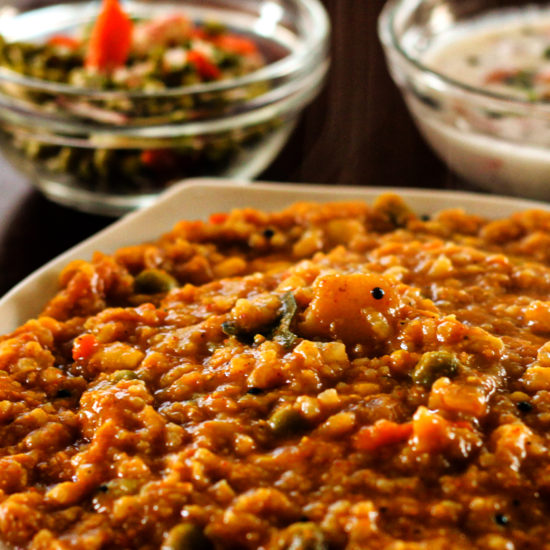
Bisi bele bath (Sambar Rice) is a popular lunch item in Karnataka. Bisi bele bath is widely available in most restaurants across the state. Bisi bele bath is good to have any time of the day- for breakfast, lunch or dinner. How Bisi Bele Bath is made: Rice & Lentil (edible legume or dal) are cooked separately and mixed along with Bisi Bele Bath Masala or powder. This mix is heated for several minutes and stirred regularly to ensure consistency. Bisi Bele Bath masala can be made at home or purchased from stores. Bisi Bele Bath powder is made from fine grinding of chili, cloves, cumin, chana (Bengal gram), cinnamon, coconut, urad dal, coriander seeds and other ingredients. Vegetables such as drumstick, beans, capsicum and chopped carrots are often added to Bisi Bele Bath for enhanced taste. Seasoning: Bisi Bele Bath is best served hot. Bisi Bele Bath is often topped with a small portion of ghee, cashew nut pieces, asafoetida (hing), curry leaves and dry red chilli for visual appeal and enhanced taste. Served with: Bisi Bele Bath is often served with fried items like chips or boondi. Where to get Bisi Bele Bath: Bisi Bele Bath is commonly available in most darshinis (self service eateries), vegetarian restaurants in Bengaluru and other parts of Karnataka.
Maddur Vada
Maddur Vada is a popular snack (crispy fried patties) from Karnataka, originating in Madduru, a town 85 kms south west of Bengaluru.
How Maddur Vada is made:
Main ingredients of Maddur Váda are rice flour, sooji rava and maida. These ingredients are mixed with chopped onions, coriander leaves, green chilies, curry leaves and mixed very well adding warm oil and water. Salt and asafoetida (hing) are added too.
Above mix of flour and add-ons is deep fried in boiling oil till the colour turns brown to get crispy and tasty Maddur Váda. Unlike the regular vada made from Urad dal, Maddur Váda is flat, circular but will not have any hole in the centre.
Served with: Maddur Váda is often eaten without any accompaniments. However coconut chutney or tomato ketchup/sauce can make ideal accompaniment for Maddur Váda.
Where to find Maddur Váda:
Best place to have Maddur Váda is of course the town of Maddur, which falls between Bengaluru and Mysuru. If you are commuting by road between Bengaluru and Mysuru be sure to stopover at Madduru and taste Maddur Váda at a local restaurant. Maddur Váda is sold in several eateries and restaurants across Karnataka, primarily in Bengaluru, Mandya and Mysuru regions.
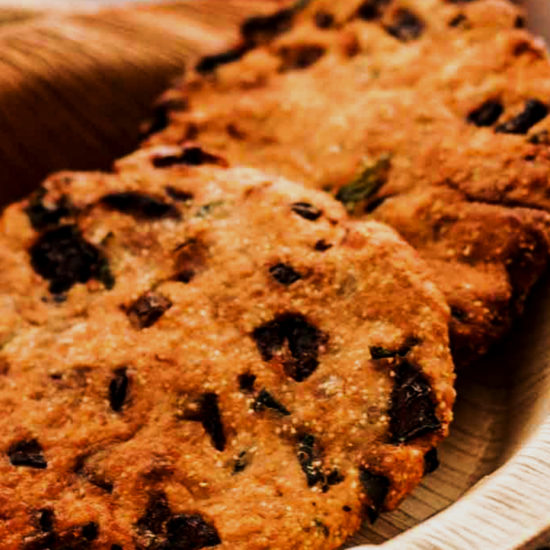
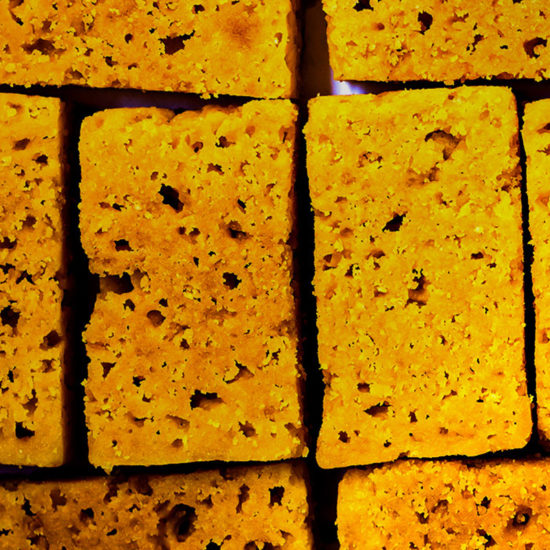
Mysore Pak
Mysore Pak is a popular sweet from Karnataka made primarily from ghee and gram flour. The term ‘Pak’ originated from Paaka, which refers to the sugary syrup used as sweetener in Mysore Pak.
Preparation:
- Step 1: Prepare Ghee+ Gram mix: Ghee, a derivative of cow milk is heated on moderate flames till it gets hot. Gram flour is then added to hot ghee, fry continuously for several minutes till the mix turns brownish in colour. Purity of the ghee and preparation process makes all the difference in the taste of Mysore Pak.
- Step 2: Syrup: Sugar is mixed with water and boiled till it becomes sugar syrup. Ghee+gram flour mix prepared earlier is now added to the syrup and stirred continuously. Mysòre pak is now ready.
- Step 3: Cooling & Cutting: Final step is to let the Mysòre Pak cool down. It is also cut into smaller pieces for ease of packaging, serving and consumption.
Other things to know:
- Best of the Mysore Pak is supposed to melt as it is kept in mouth, without having to apply force and crush them.
- Mysòre Pak is best consumed within a few weeks of preparation. If stored in refrigerated conditions, it can be preserved for a couple of months.
Where to get: Mysore Pak is readily available in most bakeries and sweet shops all across Karnataka. Several restaurants in Karnataka offer Mysòre Pak as one of the dessert items.
Guru sweets is known to be one of the oldest and authentic sweet shop in Mysuru, run by the descendants of the former cook of the royal courts, Kakasura Madappa.
The entire street of Sayyaji Rao road in Mysuru is filled with sweet shops as well to shop from.
Mysuru Masale Dose
Mysuru Masale Dose is a popular variant of Masale Dose. Mysuru Masále Dose is a regular Masale Dose, spread with red chilli-garlic chutney on the inside.
How Mysuru Masale Dose is made:
Rice + Urad Dal is soaked for hours, ground thoroughly and allowed to ferment overnight. This makes Dose batter. Salt is added before batter is used to prepare dose. A chutney is made from red chillies and garlic separately, along with baked potato smash. Dose batter is applied on a circular pan, spread thin and evenly and heated till one side turns brown. Chilli-garlic chutney is now applied to the inner (white coloured) side, potato smash is added and dose is folded. Masale Dose is now ready to be served.
Served with: Small piece of butter is often tossed on top of hot Masale Dose. Coconut Chutney, Mint Chutney and Sambar are often served along with Mysuru Masala Dose.
Where to find Mysuru Masale Dose:
Most restaurants in Karnataka, particularly in the Bengaluru-Mysuru region serve Mysuru Masále Dose for breakfast and dinner. One may use food delivery apps to locate restaurants nearby that serve Mysuru Masále Dose. Some restaurants do serve Mysuru Masala Dose in extra large size, such that one dose is adequate for a family of four.
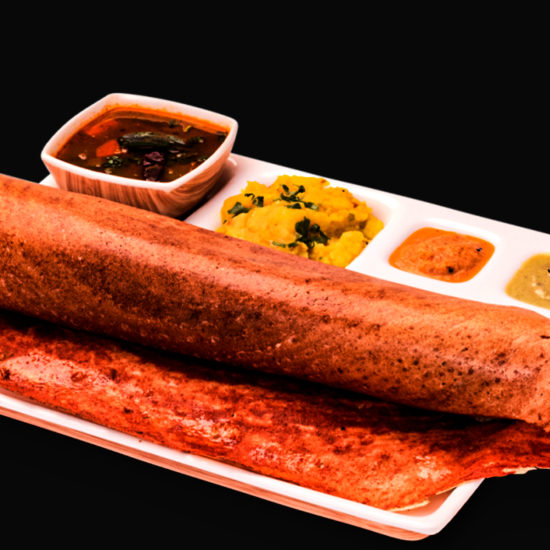
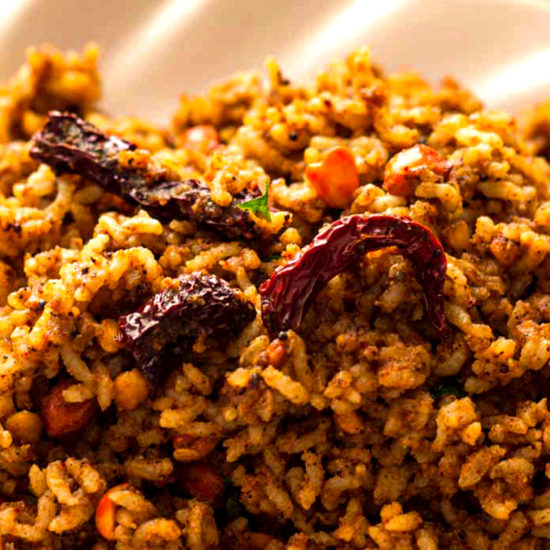
Kadubu
Kadubu is a popular breakfast dish in Karnataka. Kadubu is essentially an Idli (rice cake) in an interesting shape, cooked in cups made of jackfruit leaves.
How is Kadubu made?
Idli rice and urad dal are soaked in water for several hours. Once they get soft, the rice and dal is ground till they form smooth batter. This batter is left overnight to ferment. Fermented batter almost doubles in volume with lots of air bubbles. Next day, salt is added and batter is poured into specially made cubical cups (made by stitching jackfruit leaves together) or cylindrical cups made by rolling palm leaves. In the event of unavailability of leaves, stainless steel cups are used.
The batter in its cup is steam cooked for 10-15 minutes and Kadubu will be ready. This unique shape and aroma of leaves give Kadubu its uniqueness, compared to a more common form of the same batter, the Idli. Serving one single piece of Kadubu is usually equivalent to having three to four Idlis.
Served with: Kadubu is often served with coconut chutney and spicy sambar. A cup of filter coffee is also a great combination while enjoying Kadubu.
Where to find Kadubu:
Kadubu is commonly sold in restaurants of Coastal Karnataka and Malenadu (Western Ghats region). Several upscale restaurants in Bengaluru also serve Kadubu. You may use food delivery apps to locate the restaurant nearest to you serving Kadubu.
Puliyogare
Puliyogare, also referred to as Tamarind Rice or Pulihora is a popular rice based dish in Karnataka with a sour taste.
Preparation: Cooked short grain rice and Puliyogare mix are main ingredients of Puliyogare. Puliyogare mix is prepared by grinding fried lentils, chillies and spices, which is then mixed with tamarind extract or essence along with jaggery. Puliyogare mix (also known as Puliyogare paste or gojju) is then added to pre-cooked white rice and mixed thoroughly.
Served with: Puliyogare is often served with spicy coconut chutney. Happala/Sendige (fryums) are also good to have along with Puliyogare.
Also try: Other similar rice based dishes to try in Karnataka include Chitranna (Lemon Rice), Bisi bele bath (sambar rice), Curd Rice, Vangi Bath and Tomato Rice.
Where to get Puliyogare: Puliyogare is commonly available in most darshinis (self help eateries) and restaurants in Bengaluru and other parts of Karnataka. Puliyogare Point in Basavanagudi, Bengaluru is an exclusive restaurant serving Puliyogare. Puliyogare mix is readily available in supermarkets and grocery stores, using which it is possible to prepare Puliyogare on our own if one has access to kitchen facilities and can cook rice.
Several temples in Karnataka offer a small portion of Puliyogare as ‘Prasadam’ to devotees.
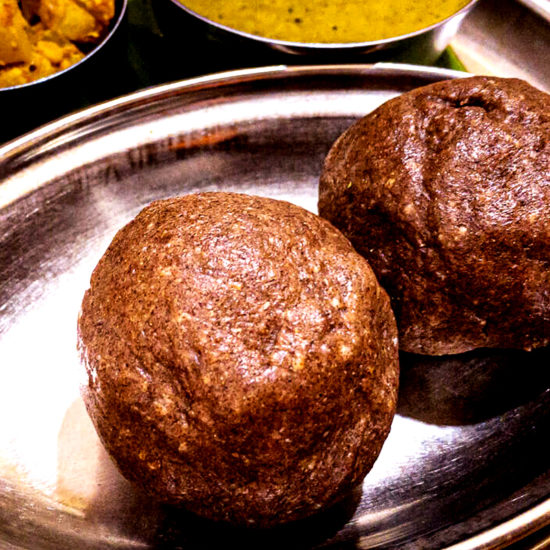
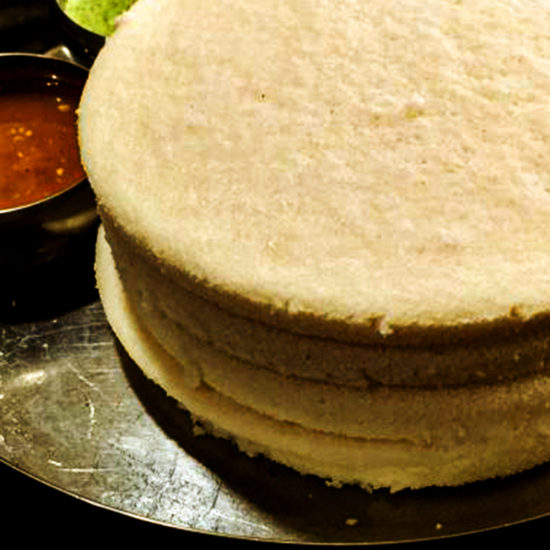
Thatte Idli is a popular variant of Idli (rice cake). While regular idli is smaller and thinner, This idli is larger in circumference as well as thickness and gets its name from the circular disc type bowl in which it is made. It is better known as Bidadi (Ramanagara district, between Mysuru and Bengaluru express highway), Thàtte Idli as it originated in Bidadi town. How Thatte Idli is made Idli rice and urad dal are soaked in water for several hours. Once they get soft, the rice and dal is ground till they form a smooth batter. Idli batter is left overnight to ferment. Fermented batter almost doubles in volume with lots of air bubbles. Next day, salt is added and batter is spread on special purpose plates- the size of Thàtte Idli and steam cooked for 15-20 minutes in moderate flames. Now, thàtte idli is ready to be served. One single Thàtte idli equals 2-3 regular size idlis in terms of volume. Hence though a plate of Thàtte idli costs more than normal idli, This idli is very fulfilling. Served with: The Idli is served with coconut chutney and sambar. A cup of filter coffee is also a great companion while enjoying Idli. Where to find Thatte Idli: Brahmin’s Thàtte Idli restaurants are a popular spot in Bengaluru to have the Idli. Thatte idli is sold in various quick service restaurants around the state including restaurants located on the state highways between Bengaluru and Mysuru. This idli is usually available during breakfast hours and evening hours.



